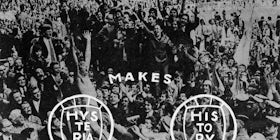
Conference Report | Engaged Visuality | Rome 7-8 July 2022
International Symposium Engaged Visuality. The Italian and Belgian Poesia Visiva Phenomenon in the 60s and 70s.
The conference, organized by Maria Elena Minuto (ULiège; KU Leuven) and Jan De Vree (M HKA Museum, Antwerp), took place on 7-8 July 2022 at the Academia Belgica and at the Università degli Studi ‘La Sapienza’ of Rome and benefitted from the support of the Beinecke Library of Yale, the M HKA Museum of Antwerp, the The Research Foundation – Flanders (FWO) and the Society for Italian Studies (SIS).
Led by an international Scientific Committee and thanks to an interinstitutional cooperation between Royal Holloway University of London, Yale University, Université de Liège, KU Leuven and Università ‘La Sapienza’ of Rome, Engaged Visuality brought together scholars in Comparative Literatures, Visual Arts and Italian Studies, as well as poets and curators from all over the world (United States, United Kingdom, Italy, France, Belgium, Spain, the Netherlands) to discuss from comparative, transcultural and multilingual perspectives the manifold relationships between Italian and Belgian visual poets of the 60s and 70s with regard to historic avant-gardes, artists’ publications, European counterculture, intermedia and interdisciplinary practices.
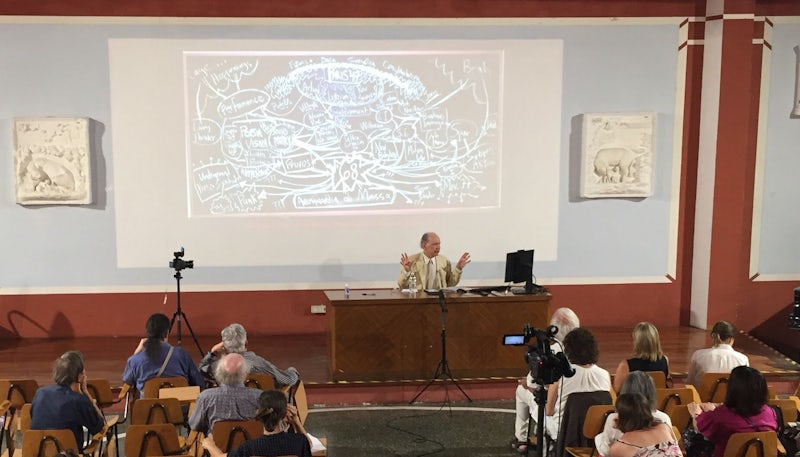
‘Phono-, ideo-, typo-, icono-, photographical; mono-, stereo-, quadro-, ambiophonic; phonographic, bioscopic, kinetic; kinesic, eatable, odorous, tangible’ (c.f. Damen, 1972), poesia visiva arises from the Italian Gruppo 63 and the Gruppo 70 and is one of the numerous and diverse tendencies displayed by post-World War II experimental poetry. Paul De Vree considers poesia visiva as the most progressive art form in the sense of the fusion of the arts performed by Dada and describes it as ‘regenerative of the awareness and view of a non-alienated world.’ Suddenly, a poetry could be a photo-text composition (Sarenco, Political Licence, 1971), a performative public action (Alain Arias-Misson, The Punctuation Public Poem, Pamplona, 1972) or a technological verbo-visual collage (Lamberto Pignotti, Lucia Marcucci, Eugenio Miccini) which critically engaged with the advent of the mediatic culture, the Vietnam War and the May revolt in 1968. These counterculture movements marked a crucial shift in the relationship between language and politics, as well as in the change of aims and attitudes between Concrete and Visual Poetry, by pushing neo-avant-garde experimental poetry in the public space, mass communication and ideological commitment. Within this vibrant historical and cultural framework, Sarenco and Paul De Vree co-founded the international poetry magazine Lotta Poetica (first series: 1971-75): the aim of Italian and Belgian cultural transfers, interdisciplinary cooperation and poesia visiva phenomenon. In the decade of the 1970s this journal was to become the voice of militant criticism, intermedia visualities and the central hub for the poesia visiva movement by tracing out an international network of poets that experimented with poetry as a visual, political and transcultural medium according to social and cultural dissent.
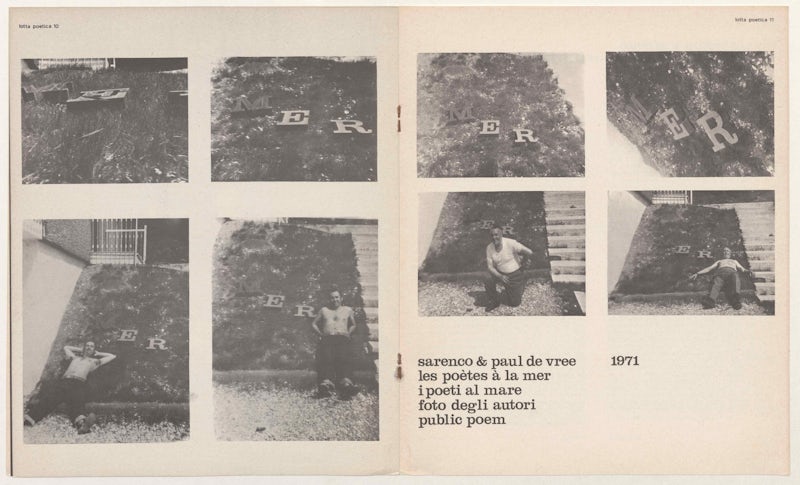
Maria Elena Minuto and Jan De Vree began the event by introducing the main topics of the conference which, in addition to scholarly presentations and Q&A sessions, hosted artist’s lectures and performances. The reworking of the historic avant-gardes in Visual Poetry was the subject of the first section of the conference entitled ‘Anticipated Futures and Reconstructed Pasts’ which was introduced by the performance poetry entitled a – èh made by G. J. de Rook. To start the keynote speech given by Giorgio Zanchetti (Università degli Studi di Milano) explores the early word-image works of René Magritte and how their theoretical implications in particular may have affected some of the fundamental issues in early Conceptual Art. While Caterina Caputo (Università degli Studi di Firenze) analyses the verbo-visual collages of the Belgian avant-garde artist E.L.T. Mesens through unpublished archive material and his close relationship with the Italian art scene in the 50s and 60s, keynote speaker Annalisa Rimmaudo (MNAM-Centre Pompidou) focused on the 1970 outstanding exhibition Klankteksten – Konkrete poëzie – Visuele teksten at Stedelijk Museum in Amsterdam which provided the first comprehensive overview of the developments of neo-avant-garde experimental poetry in all its manifestations (concrete, sound, visual) including poetic works by international poets who also adopted a variety of extralinguistic materials other than purely typographical, often incorporating expressions of political-social or conceptual thoughts. Most of these poets will later group themselves into the Lotta Poetica magazine.
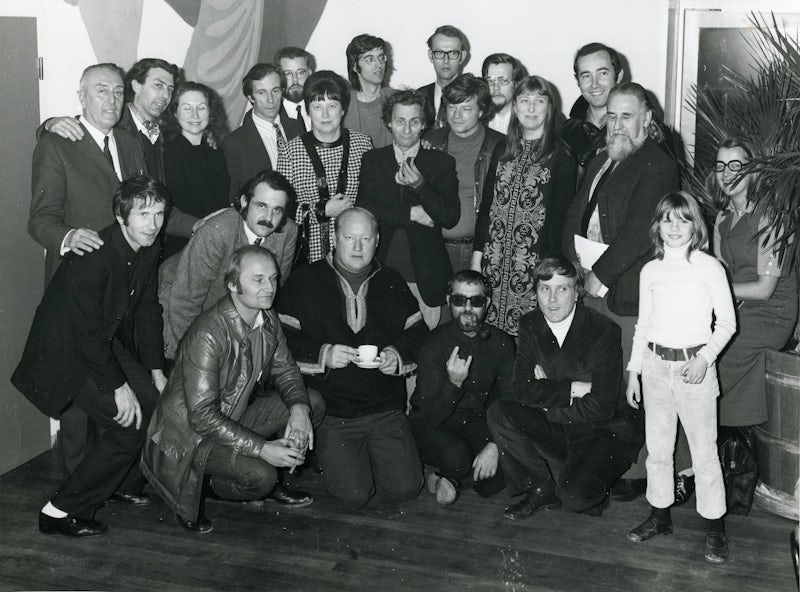
One can safely state that since the 1950s artist’s magazines span multiple networks and geographies, as well as various cultures and historical contexts by outlining a strong vision of the leading influencers and practitioners of experimental poetry: from Herman de Vries’ random objectivations and Augusto de Campos’ poemi concreti, to Jean-François-Bory’s minute poems and Clemente Padin’s poemi processo, from Julien Blaine’s poésie élémentaire to Michele Perfetti and Luciano Ori’s poesie visive. The international neo-avant-garde art of publishing with regard to interdisciplinarity and intermediality was explored in a second group of lectures given by international scholars specialized in the 20th century visual poetics and periodical studies. The section was introduced by the verbivocovisual performance Babel made by G. J. de Rook which carried the audience into the multicultural dimension of poetic language. Dirk De Geest (KU Leuven), Patrizio Peterlini (Fondazione Bonotto), Caitlin Woolsey (Clark Art Institute) and Alessandra Acocella (Università degli Studi di Parma) discussed a number of seminal literary periodicals from Belgium, France and Italy including Paul De Vree’s De Tafelronde (1953-82), Henri Chopin’s OU (1958-74), Max Kazan, Leon van Essche, Hugo Neefs’s Labris (1962-73), Sarenco and De Vree’s Lotta Poetica (1971-75), as well as many other Italian artist magazines such as Luciano Caruso and Stelio Maria Martini’s Continuazione A-Z (1973). The first day of the conference ended with a tribute to the richness of the work and legacy of poets Martino and Anna Oberto, as well as to their pivotal role in fostering the Italian and Belgian poetic exchanges in the 60s and 70s. The artistic and literary magazine Ana Etcetera (1958-71) and their collaboration with the Belgian revue Phantomas (1953-80) are some of the most significant examples in this regard. In addition to scholarly panels, visual poet Alain Arias-Misson gave a keynote lecture on ‘Mes aller-retours entre Bruxelles- Illasi – Anvers de 1967, 1968 et 1969: Sarenco et Paul De Vree.’ Last but not least G. J. de Rook will treat the audience to another performance entitled Fake.
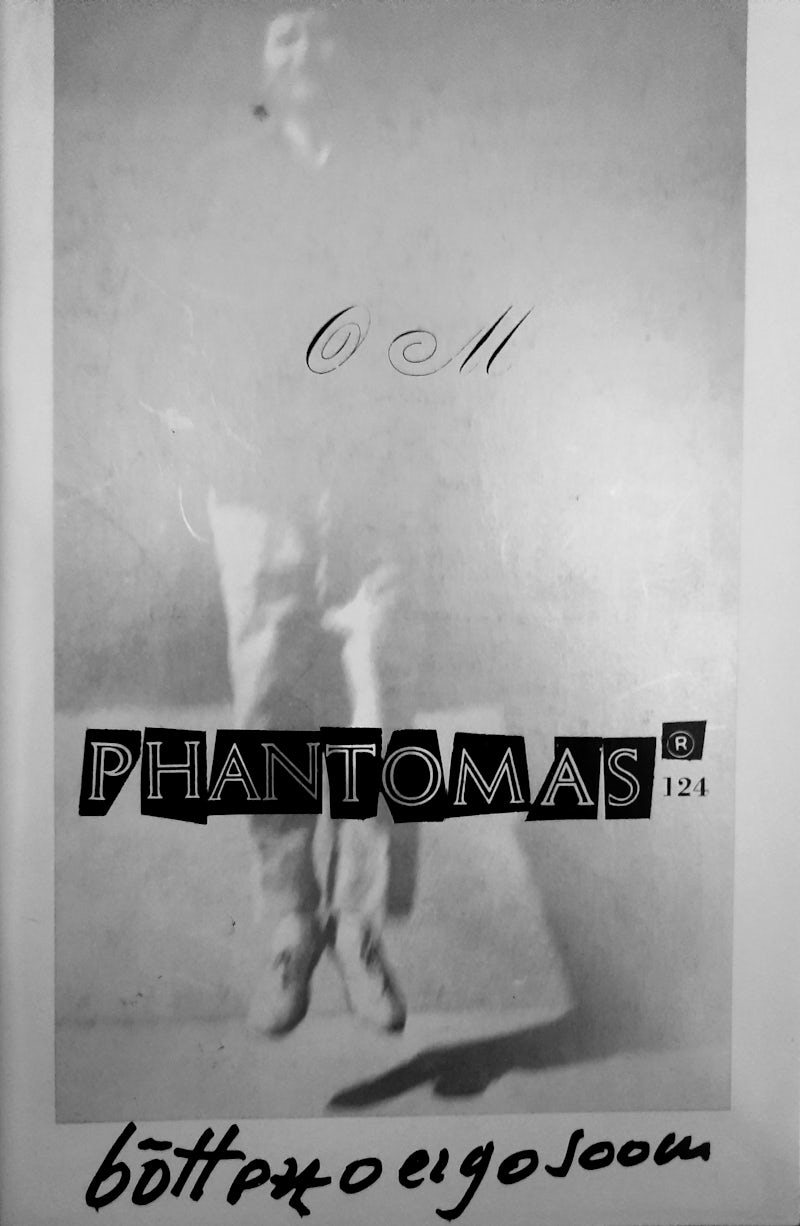
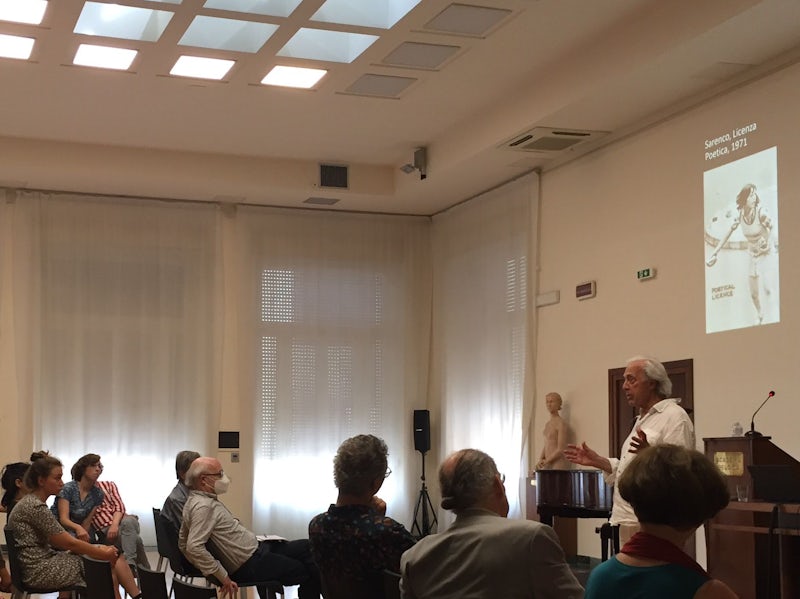
The second day of the conference took place at Università degli Studi ‘La Sapienza’ of Rome and was opened with the keynote speech ‘Expressive Concentrates: Sound in the Visual Poetry of Gerhard Rühm’ in which Nancy Lynn Perloff (Getty Research Institute, Los Angeles) addressed the crucial role of Anton Webern’s ‘early pieces reduced to expressive concentrates’ in Gerhard Rühm’s minimalist-concrete and visual poetry. The lecture was also performed by some pre-recorded audio excerpts of Gerhard Rühm’s poems (Wand/Bild, Stille, Frau/Frau, 1954-1964) recited by Marjorie Perloff (Stanford University), the renowned critic of contemporary, modern, and avant-garde poetry and poetics. The local and global networks of post-World War II visual poetics was at the core of the discussions in the first section of the day and was explored through specific case-studies and key figures of the time, such as the verbovisual agency of Lucia Marcucci by Maria Alicata (Università ‘La Sapienza’) and Jiří Valoch as international redactor for Lotta Poetica by Juliane Debeusscher (LARHRA-Laboratoire de Recherche Historique Rhône-Alpes). During the course of Lotta Poetica’s first year, a deepening rapport and understanding grew among Jean-François Bory, Herman Damen, Paul De Vree, Lucia Marcucci, Eugenio Miccini, Alain Arias-Misson, Luciano Ori, Michele Perfetti, and Sarenco. From 1972 till 1979, they formed a group known as the ‘International Poesia Visiva Group’, also known as ‘Gruppo dei Nove’. Julien Blaine and Franco Verdi joined the group at the end of the 1970s. The group comprised an extensive network and grew all the more thanks to collective participation at exhibitions, the production of multiples, records, films and videos, the compilation of anthologies of international visual poetry, etc. As a group they were represented by various galleries in Brescia (Studio Brescia), Milan (Studio Santantrea), Venice (Galleria Il Canale), Antwerp (Galerie Jeanne Buytaert), Ghent (Richard Foncke), and Aalst (New Reform). Taking the ‘Year of Poesia Visiva’ (1972) as a point of departure, the keynote speech ‘A New Center of Gravity: Experimental Poetry and the Shifting Alliances of Paul De Vree’ given by Kevin Repp (Beinecke Library of Yale) pointed out the pivotal role of the Belgian poet ‘in building and transforming the transnational networks that sustained the innovation, expansion, and an increasingly militant radicalization of experimental poetry across postwar Europe in the 1960s and ‘70s’.
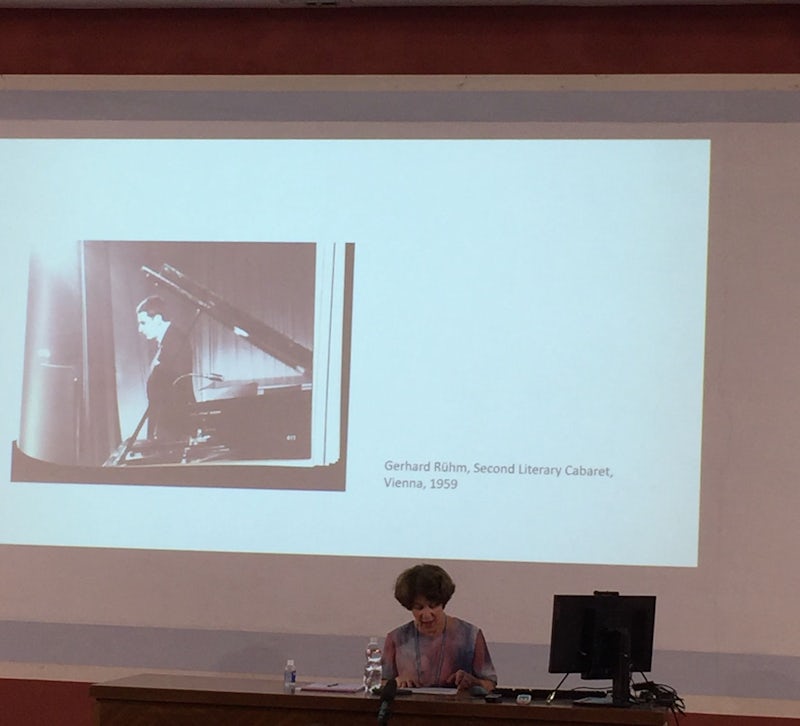
In her keynote speech, led by Francesca Terrenato (Università ‘La Sapienza’), Carla Subrizi (Università ‘La Sapienza’) raised a fundamental question on the possibility to ‘reread Julia Kristeva’s La revolution du langage poétique (1974) and subsequent writings on the relations between desire and language, as a critical theory that operated on the threshold of linguistic codes, placing visual and writing in a trans-disciplinary relationship’. Subrizi examined the extension of poetry beyond the conventional limits of its genre from a comparative and multicultural approach: starting from the analysis of Patrizia Vicinelli’s performative actions, up to the examination of Sophie Podolski’s Le pays où tout est permis (1972). Pamela Bianchi (ESADTPM, Toulon; Université Paris 8) and Anna Battiston (Sorbonne; IUAV Venice) explored the crucial role of activist underground networks and alternative cultural (art)spaces for the development of Visual Poetry in Italy in the 1960s and 1970s by reconsidering the movement as part of a wider conceptual, semiotic and aesthetic revolution, which incorporates the interdisciplinarity of mediums in a dynamic historical and cultural flow. In ‘Redefining the boundaries of the Italian Neo-Avant-Garde: the Gruppo 63 taking lessons from the Gruppo 70’, Chiara Portesine (Scuola Normale Superiore di Pisa) attempts to challenge the widespread stereotype found in Italian literary criticism, namely the interpretation of the so-called Gruppo 70 as an offshoot of Gruppo 63. Her research shows through a comparative study of seminal visual poetry magazines, anthologies and collective events the synergy between the two groupings as well as how Pignotti’s and Miccini’s theoretical thoughts stimulated some poets of the Gruppo 63 (Antonio Porta, Alfredo Giuliani and Nanni Balestrini among the others) to start or increase their own production of poesia visiva.
The second day closed with two keynote lectures by theorists and visual poets chaired by Emanuela Patti (University of Edinburgh). Gerrit Jan de Rook extended the reflection to the Dutch connection and underlined the paradigm shift between Concrete and Visual Poetry wich resulted both in a recuperation of the daily media of communication and in a more militant approach in relation to the present societal situation. As Sarenco and De Vree pointed out in Profilo storico della poesia visiva (1972): ‘C’est en 1963 que dans le monde entier commencent à naitre de nouveaux groups et mouvements, qui ne se sentent pas à l’aise dans le corset de la poésie concrète et qui veulent travailler dans d’autres dimensions. Cette nouvelle génération s’attribue déjà des noms différents pour son travail : poésie spatiale (France), poésie expérimentale (Tchécoslovaquie), poésie fusionnelle (Pays-Bas), conceptual poetry (Amérique), public poetry (Belgique), etc., et même des courants idéologiquement anti- concrets se manifestent, surtout en Italie (poesia visiva) et en France (poésie élémentaire)’. In the lecture entitled ‘Italian-Belgian Correspondences and Convergences in the International Context of Verbovisuality’, Lamberto Pignotti focused on his ‘interart poetics’ and discussed the radical expansion of language ‘towards total poetry’ with respect to interdisciplinarity and intermediality. As the poet emphasised, ‘se le operazioni della poesia visiva tendono dunque a privilegiare le potenzialità espressive legate ai codici iconico e verbale, non si deve neppure dimenticare che, fin dalle prime formulazioni, i poeti visivi hanno consapevolmente ricercato e provocato una attivazione di tutti i possibili codici, da quello gestuale a quello spaziale, a quello ambientale, provocando l’uscita del testo estetico sia dalla pagina che dal quadro in direzione di una linea intermediale’.
The conference concluded with a video montage realized by Jan De Vree and Mario De Munck (M HKA Museum) featuring documentary archival material from the Paul De Vree Archive in Antwerp. Based on never-before-seen and rare footage recordings and audio excerpts of Sarenco and De Vree, the video provided a concise and refined overview of Lotta Poetica’s transnational network and counterculture activities during the early 1970s, as well as the longstanding friendship and manifold poetic exchanges between De Vree and Sarenco.
Aimed at reconstructing and deepening the historical and critical understanding of Italian and Belgian cultural transfers in the history of the 20th century experiences of Visual Poetry, the Conference was a great success both in terms of scholarly excellence and with regard to the high level of interest and appreciation showed by the speakers, chairs and the several auditors who attended the Conference. The Conference organisers were delighted with such a creditable outcome and wish to express their utmost gratitude to all participants and to the Scientific Committee and Partnerships for allowing the Academia Belgica and the University of Rome to host such a prestigious Conference.
— Maria Elena Minuto & Jan De Vree
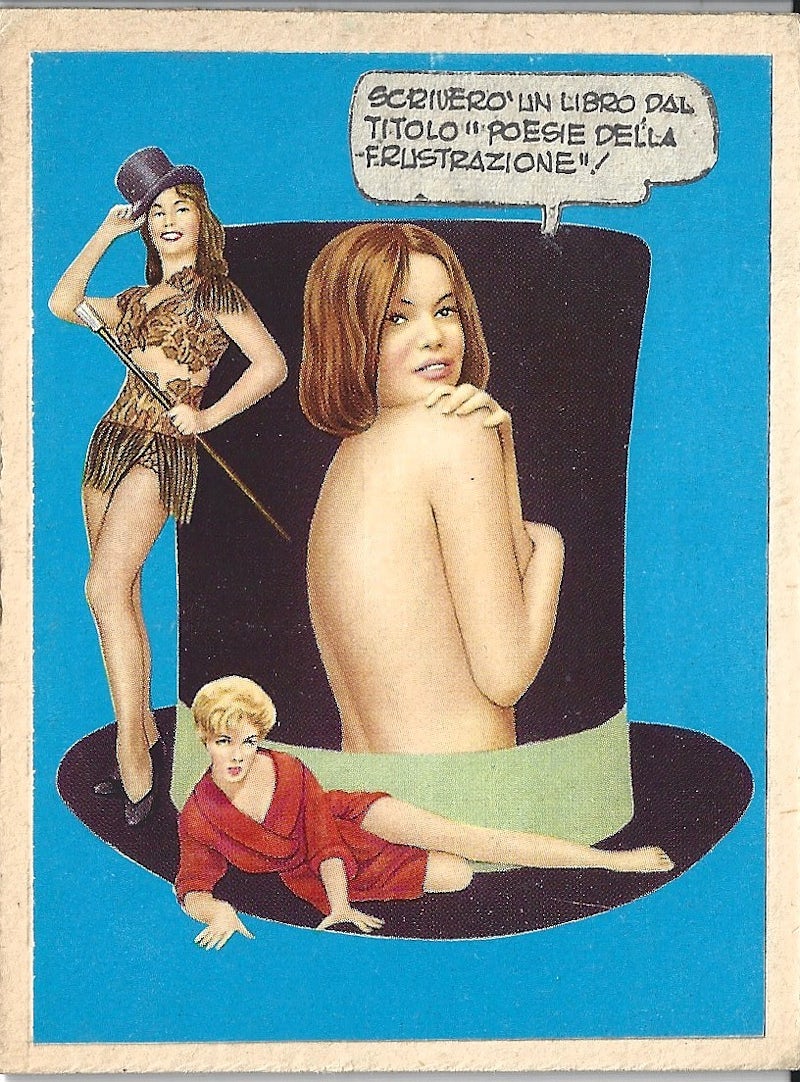
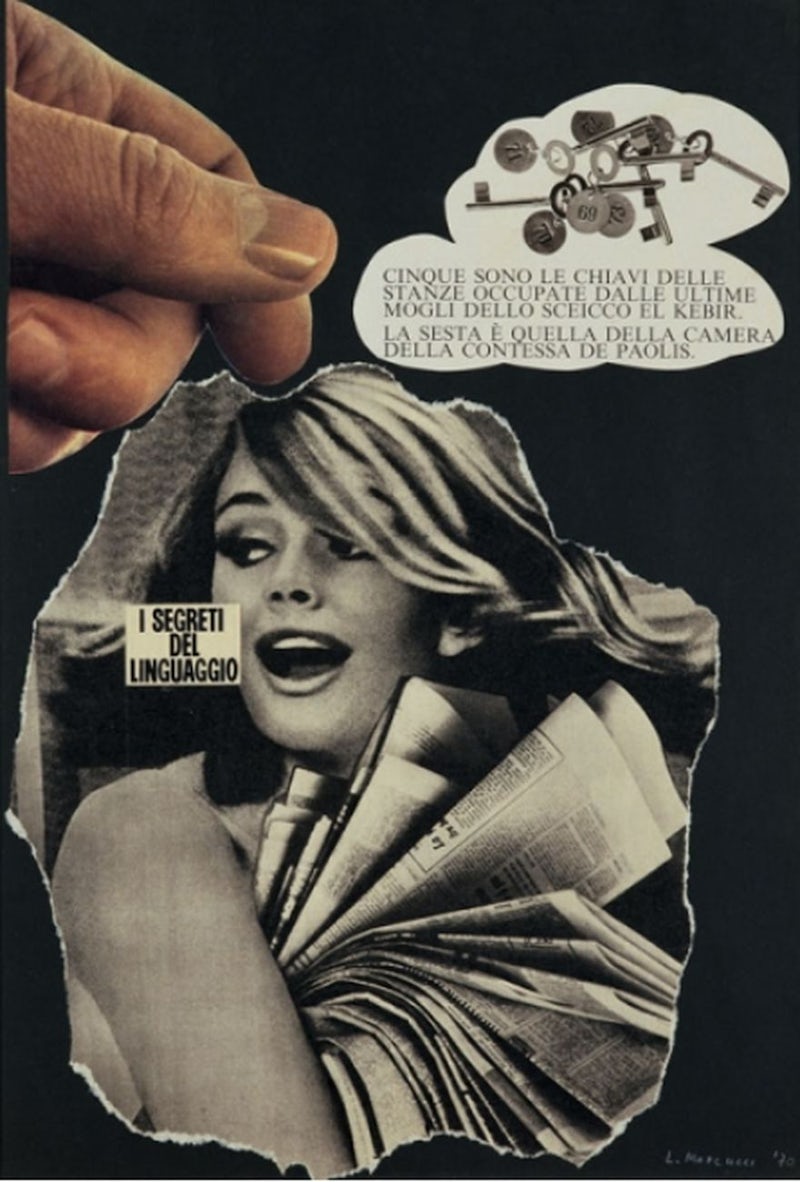
Engaged Visuality: The Italian and Belgian Poesia Visiva Phenomenon in the 60s and 70s. An International Symposium organized fifty-one years after the foundation of Lotta Poetica.
Scientific Partnerships: Royal Holloway University of London – Department of Languages, Literatures and Culture); Beinecke Rare Book & Manuscript Library (Yale University); Università degli Studi “La Sapienza” di Roma – Department of History, Anthropology, Religions, Art History, Media, and Performing Arts; Université de Liège, Belgium – Department of Modern Languages and Department of Historical Sciences; KU Leuven, Belgium – Department of French, Italian and Spanish Literature; Università degli Studi di Milano – Department of Cultural Heritage and Environment.
In collaboration with: Academia Belgica, Rome; M HKA Museum and Royal Academy of Fine Arts, Antwerp; the Society for Italian Studies (SIS); the Centre Interdisciplinaire de Poétique Appliquée (CIPA, ULiège); the Service d’histoire de l’art de l’époque contemporaine (SHAÉC, ULiège); the UR Traverses (ULiège); the Handling (UCLouvain); the Collection for Research on Artists’ Publications – CRAP, Ekeren.
Scientific Committee: Jan BAETENS (KU Leuven), Julie BAWIN (Université de Liège), Laurence BROGNIEZ (Université Libre de Bruxelles), Michel DELVILLE (Université de Liège), Jan DE VREE (M HKA Museum, Antwerp), Elio GRAZIOLI (Università degli Studi di Bergamo), Maria Elena MINUTO (Université de Liège; KU Leuven), Johan PAS (Royal Academy of Fine Arts, Antwerp), Giuliana PIERI (Royal Holloway University of London), Kevin REPP (Beinecke Library, Yale), Bart VAN DEN BOSSCHE (KU Leuven).
The conference was fully recorded and will be made available in the following months through the website of the M HKA Museum of Contemporary Art of Antwerp.
For more information: M HKA Museum of Contemporary Art of Antwerp, Royal Holloway University of London. Department of Languages, Literatures and Cultures.




